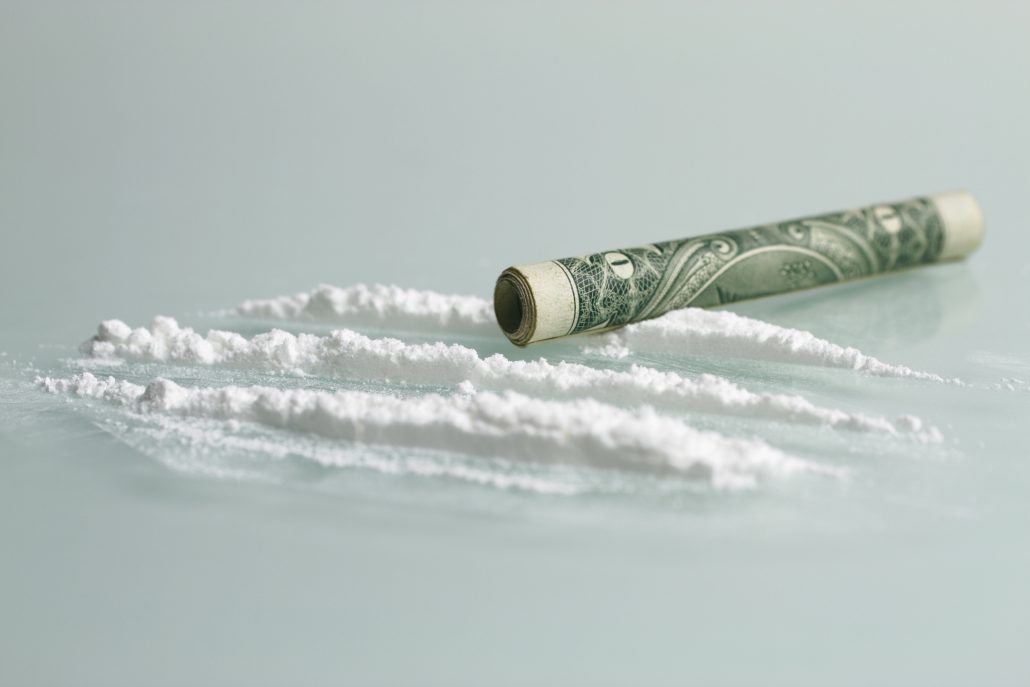America’s Heavy Drinking: Where Do All 50 States Rank?

Even though the country is very aware of the opioid crisis that continues to claim lives every day, one of the most dangerous drugs in America is still alcohol. Heavy drinking in the US is also a deadly epidemic. According to the Center for Disease Control and Prevention (CDC) an estimated 90,000 people die from excessive drinking every year.
Another new report also indicated that those who do die from alcohol abuse actually die an average of 30 years prematurely.
With more deaths related to heavy drinking than any other drug, which states have the highest rates? A new piece released on 24/7 Wall St. from last week went to work ranking all 50 states.
Defining Different Drinking
In order to better understand how troubling the data truly is, we first have to understand what qualifies as “excessive drinking”.
The CDC categorizes an alcoholic drink as something containing 0.6 fluid ounces of pure alcohol. Therefore, the CDC considers excessive drinking to include terms like:
- Heavy drinking
- Binge drinking
- Underage drinking (for those under 21 years of age)
- Drinking while pregnant
For women, excessive drinking is four or more drinks on a single occasion. For men, it requires five or more drinks in one sitting.
When it comes to “heavy drinking”, by CDC standards:
- Women consume at least eight alcoholic drinks per week
- Men consume at least 15 alcoholic drinks per week
24/7 Wall St. analyzed CDC data on heavy drinking, along with census bureaus and the National Institute on Alcohol Abuse and Alcoholism (NIAAA) to create their report. What it shows is that 18% of Americans drink excessively, but that the difference between states it dramatic.
America’s Heavy Drinking States
-
Tennessee
- Adults drinking excessively: 11.2%
- Alcohol-related driving deaths: 28.0% (11th lowest)
-
West Virginia
- Adults drinking excessively: 11.4%
- Alcohol-related driving deaths: 32.0% (25th lowest)
-
Utah
- Adults drinking excessively: 12.4%
- Alcohol-related driving deaths: 19.7% (the lowest)
-
Alabama
- Adults drinking excessively: 13.0%
- Alcohol-related driving deaths: 29.4% (17th lowest)
-
Mississippi
- Adults drinking excessively: 13.3%
- Alcohol-related driving deaths: 23.3% (3rd lowest)
-
New Mexico
- Adults drinking excessively: 13.8%
- Alcohol-related driving deaths: 32.1% (25th highest)
-
Oklahoma
- Adults drinking excessively: 13.9%
- Alcohol-related driving deaths: 29.9% (19th lowest)
-
North Carolina
- Adults drinking excessively: 14.9%
- Alcohol-related driving deaths: 32.3% (24th highest)
-
Arkansas
- Adults drinking excessively: 15.3%
- Alcohol-related driving deaths: 28.4% (13th lowest)
-
Idaho
- Adults drinking excessively: 15.4%
- Alcohol-related driving deaths: 28.4% (23rd highest)
-
Maryland
- Adults drinking excessively: 15.5%
- Alcohol-related driving deaths: 32.8% (20th highest)
-
Nevada
- Adults drinking excessively: 15.8%
- Alcohol-related driving deaths: 32.8% (21st highest)
-
Arizona
- Adults drinking excessively: 16.0%
- Alcohol-related driving deaths: 27.6% (9th lowest)
-
Kentucky
- Adults drinking excessively: 16.3%
- Alcohol-related driving deaths: 28.5% (14th lowest)
-
South Carolina
- Adults drinking excessively: 16.4%
- Alcohol-related driving deaths: 37.8% (7th highest)
-
Delaware
- Adults drinking excessively: 16.6%
- Alcohol-related driving deaths: 37.9% (6th highest)
-
Indiana
- Adults drinking excessively: 16.8%
- Alcohol-related driving deaths: 23.6% (5th lowest)
-
Georgia
- Adults drinking excessively: 16.8%
- Alcohol-related driving deaths: 23.4% (4th lowest)
-
Kansas
- Adults drinking excessively: 16.9%
- Alcohol-related driving deaths: 27.3% (8th lowest)
-
Texas
- Adults drinking excessively: 17.3%
- Alcohol-related driving deaths: 29.9% (8th lowest)
-
Virginia
- Adults drinking excessively: 17.4%
- Alcohol-related driving deaths: 30.5% (20th lowest)
-
Florida
- Adults drinking excessively: 17.4%
- Alcohol-related driving deaths: 28.2% (12th lowest)
-
Wyoming
- Adults drinking excessively: 15.5%
- Alcohol-related driving deaths: 35.3% (10th highest)
-
New Jersey
- Adults drinking excessively: 17.6%
- Alcohol-related driving deaths: 24.3% (20th lowest)
-
Missouri
- Adults drinking excessively: 17.7%
- Alcohol-related driving deaths: 31.7% (23rd lowest)
-
South Dakota
- Adults drinking excessively: 17.7%
- Alcohol-related driving deaths: 35.2% (11th highest)
-
Washington
- Adults drinking excessively: 17.8%
- Alcohol-related driving deaths: 35.0% (12th highest)
-
Rhode Island
- Adults drinking excessively: 17.9%
- Alcohol-related driving deaths: 40.4% (3rd highest)
-
California
- Adults drinking excessively: 18.0%
- Alcohol-related driving deaths: 29.0% (15th lowest)
-
Pennsylvania
- Adults drinking excessively: 18.1%
- Alcohol-related driving deaths: 32.0% (24th lowest)
-
New York
- Adults drinking excessively: 18.2%
- Alcohol-related driving deaths: 23.0% (2nd lowest)
-
New Hampshire
- Adults drinking excessively: 18.4%
- Alcohol-related driving deaths: 31.2% (22nd lowest)
-
Connecticut
- Adults drinking excessively: 18.6%
- Alcohol-related driving deaths: 33.4% (18th highest)
-
Louisiana
- Adults drinking excessively: 18.8%
- Alcohol-related driving deaths: 32.6% (22th highest)
-
Oregon
- Adults drinking excessively: 18.8%
- Alcohol-related driving deaths: 32.8% (19th highest)
-
Colorado
- Adults drinking excessively: 19.1%
- Alcohol-related driving deaths: 34.7% (13th highest)
-
Ohio
- Adults drinking excessively: 19.2%
- Alcohol-related driving deaths: 34.3% (14th highest)
-
Massachusetts
- Adults drinking excessively: 19.5%
- Alcohol-related driving deaths: 27.8% (10th lowest)
-
Vermont
- Adults drinking excessively: 19.6%
- Alcohol-related driving deaths: 33.4% (17th highest)
-
Maine
- Adults drinking excessively: 19.6%
- Alcohol-related driving deaths: 39.8% (4th highest)
-
Michigan
- Adults drinking excessively: 20.0%
- Alcohol-related driving deaths: 29.4% (16th lowest)
-
Nebraska
- Adults drinking excessively: 20.4%
- Alcohol-related driving deaths: 35.6% (9th highest)
-
Hawaii
- Adults drinking excessively: 20.5%
- Alcohol-related driving deaths: 38.0% (5th highest)
-
Iowa
- Adults drinking excessively: 21.0%
- Alcohol-related driving deaths: 25.4% (7th highest)
-
Minnesota
- Adults drinking excessively: 21.1%
- Alcohol-related driving deaths: 30.9% (21st lowest)
-
Illinois
- Adults drinking excessively: 21.2%
- Alcohol-related driving deaths: 34.2% (15th highest)
-
Montana
- Adults drinking excessively: 21.8%
- Alcohol-related driving deaths: 46.3% (2nd highest)
-
Alaska
- Adults drinking excessively: 22.1%
- Alcohol-related driving deaths: 33.8% (16th highest)
-
Wisconsin
- Adults drinking excessively: 24.5%
- Alcohol-related driving deaths: 36.9% (8th highest)
-
North Dakota
- Adults drinking excessively: 24.7%
- Alcohol-related driving deaths: 46.7% (the highest)
What State Stats Tell Us
Looking at some of the data, you might be surprised at where some of these states ended up in the rankings. One thing that comes to no surprise is that the state with the highest rate of excessive drinking- North Dakota- also has the highest rates of alcohol-related driving deaths.
But there are things that you might not be able to tell from these numbers at face value. For one, the director of the NIAAA George Koob claims,
“There is a clear correlation between a state’s excessive drinking rate and income.”
For example, the top 25 states with higher drinking rates also have similarly high median household income. Out of those 25, 14 of them have incomes that exceed the national average of $57,617. Compare that to the 10 states with the lowest drinking rates, with 9 of them having household incomes well below that same average.
However, Koob cautions us not to see this correlation too cut and dry, stating:
“If you look at individuals, the [drinking-to-household income] pattern is somewhat different.”
Someone may look at the report and suggest that affluent individuals frequently drink to excess, however, they don’t appear to drink as heavily. In fact, it seems low-income individuals drink to excess less frequently, but when they drink, they drink heavily more consistently.
Overall, we should take notice of just how prevalent excessive drinking is in different areas all over the country. In 2016 the population of North Dakota (#1 on the list) was around 757,952. Based on this number, 24.7% excessive drinking comes out to around 187,214 adults. Even with Tennessee, the state with the lowest rate, the numbers are pretty serious. With a 2016 population of 6.651 million, 11.2% comes out to 744,912 adults drinking excessively. So almost the entire population of North Dakota.


